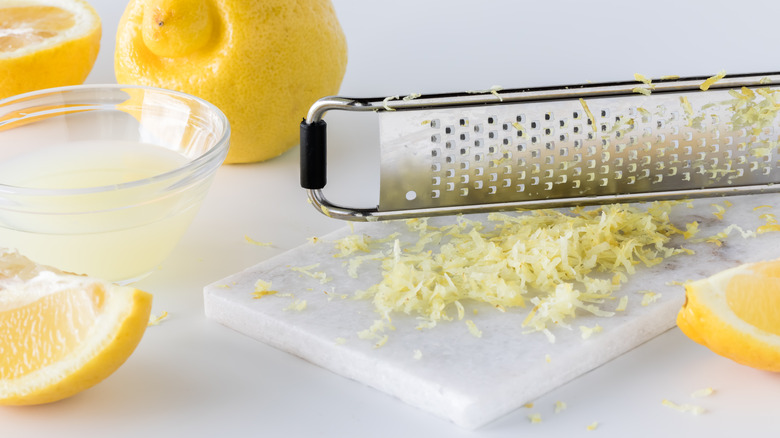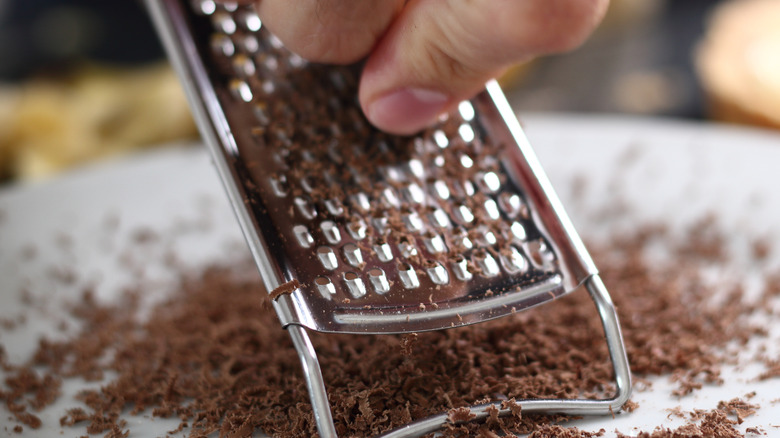The Top Tip You Need For Cleaning A Microplane
Whether you're zesting citrus for a sweet treat, finely grating a hard cheese over a salad, or mincing garlic or ginger for a marinade or vinaigrette, the Microplane's tiny sharp holes make for quick work of a pesky task and create a unique texture, making it truly both a timesaver tool in the kitchen.
It's one handheld utensil that replaces the bulkiness of a chef's knife, cutting board, and even box grater –- and let's face it; it's necessary in order to achieve the right flavor and texture in certain dishes. Zesting citrus peel and adding it to a dish immediately brightens the flavor, mincing garlic and ginger helps break down and release their natural flavors, and grating a hard cheese through the tiny holes of a Microplane creates a snow-like appearance and texture.
This magic wand-like tool can also come in handy when needing to grate whole nutmeg, horseradish, and wasabi, and can even be a go-to for shaving chocolate. However, cleaning the Microplane is the downfall. Throwing it in the dishwasher dulls the blades, and washing it by hand could lead to some unwanted cuts if not careful (per Microplane Intl.). Thankfully, there is one tip that's quite helpful.
Rinse as you go
The habit many have that makes the task of cleaning their Microplane much more difficult is not rinsing it enough. When grating a lemon, if you often leave the dirty Microplane on the counter while you continue to cook your meal, the zest will harden and become stubborn to remove when cleaning. Ginger is one of the worst ingredients to clean from a Microplane because of its natural stringiness and stickiness, with garlic being a close second. The next time you're cooking, it's important to rinse the Microplane periodically, if not right after using, seeing that the fresher the ingredients, the easier they are to remove (per Microplane).
Once you've followed this helpful tip, cleaning it will be an absolute cinch. However, if you're still struggling with stubborn bits, try soaking the tool in hot water for a few minutes, and scrubbing it with a soap-filled sponge on the back and front, moving in the same direction the blades are going (via Microplane). Another smart tip is letting it dry completely and covering it with a blade cover to prevent you from cutting yourself when sifting through the utensil drawer.

